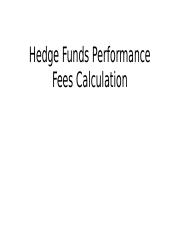
A fee that is based on assets may be one you receive from your financial adviser. It may be an appealing option for some clients but it may not be right for all. Ask your advisor before signing any agreements to discuss their asset-based fees program and the associated risks. This information is available in the client agreement, Form ADV Part 2A disclosure booklet.
Investment Management
An investment manager asset-based fee refers to the percentage of your assets that an advisor charges you to provide their services. The fee can range from 0.25 to 1 percent of your assets. It covers the management of your portfolio as well as other expenses. While it may seem innocuous at first, it can really impact your returns.
You should consider your investment objectives and goals to determine whether a fee based account is right. Consider what assets and their value. A fee-based account can have both potential advantages and disadvantages. For example, your advisor may be able to provide financial planning services.

An asset-based charge is different to an hourly one. Asset-based fees do not charge an hourly rate. Instead, they are calculated based on the total asset value. Although advisor fees may rise over time, they are based on the value of all your assets.
Insurance
An innovative type of insurance, asset-based long term care insurance, covers long-term care costs. These products use an existing asset such as an annuity or whole-life insurance policy to cover long-term care costs. The premiums paid for these policies are tax-free, and they allow you to keep your retirement assets. Asset-based Long-Term Care Insurance can be an option to help you save money on long-term nursing coverage.
An asset-based long-term care insurance policy is a hybrid product that combines life insurance and a long-term care benefit into one policy. To cover the costs of long-term health care, the life benefit is accelerated. In addition, the insurance provider will pay out a death benefit if the insured person dies while receiving care services. The insurance company will keep your assets until you claim them.
Early termination fee
You'll have to pay an upfront termination fee if your relationship ends with an asset-based adviser before the contract expires. It is usually a percentage of assets under management and it compensates advisors for their time and effort. It's a standard practice in the service industry.

The cost of the contract depends on the device type and its length. The majority of major carriers use the same setup. Verizon, AT&T, Sprint, and others all charge $50 to $350 for early termination. Additionally, advanced devices are generally charged a higher fee than standard devices.
A recent IRS case ruled that an earlier termination fee is an asset-based payment if it is paid to a merger target. The case involved a merger agreement that was reached between a target company and the would-be acquirer. A would-be acquirer had an obligation to acquire the stock of another company, and could accept another offer only if it met or beat the original bid.
FAQ
What is risk management in investment management?
Risk management is the art of managing risks through the assessment and mitigation of potential losses. It involves monitoring, analyzing, and controlling the risks.
A key part of any investment strategy is risk mitigation. The objective of risk management is to reduce the probability of loss and maximize the expected return on investments.
These are the core elements of risk management
-
Identifying the risk factors
-
Monitoring and measuring risk
-
Controlling the risk
-
Manage your risk
Why is it important to manage wealth?
Financial freedom starts with taking control of your money. Understanding your money's worth, its cost, and where it goes is the first step to financial freedom.
You must also assess your financial situation to see if you are saving enough money for retirement, paying down debts, and creating an emergency fund.
You could end up spending all of your savings on unexpected expenses like car repairs and medical bills.
Where can you start your search to find a wealth management company?
Look for the following criteria when searching for a wealth-management service:
-
Reputation for excellence
-
Locally based
-
Consultations are free
-
Continued support
-
There is a clear pricing structure
-
Good reputation
-
It is easy to contact
-
Offers 24/7 customer care
-
Offers a variety products
-
Low fees
-
There are no hidden fees
-
Doesn't require large upfront deposits
-
Make sure you have a clear plan in place for your finances
-
Has a transparent approach to managing your money
-
Makes it easy to ask questions
-
Has a strong understanding of your current situation
-
Understands your goals and objectives
-
Would you be open to working with me regularly?
-
Work within your budget
-
Good knowledge of the local markets
-
Would you be willing to offer advice on how to modify your portfolio
-
Is available to assist you in setting realistic expectations
Statistics
- US resident who opens a new IBKR Pro individual or joint account receives a 0.25% rate reduction on margin loans. (nerdwallet.com)
- Newer, fully-automated Roboadvisor platforms intended as wealth management tools for ordinary individuals often charge far less than 1% per year of AUM and come with low minimum account balances to get started. (investopedia.com)
- As of 2020, it is estimated that the wealth management industry had an AUM of upwards of $112 trillion globally. (investopedia.com)
- According to a 2017 study, the average rate of return for real estate over a roughly 150-year period was around eight percent. (fortunebuilders.com)
External Links
How To
How to Invest Your Savings to Make Money
You can get returns on your capital by investing in stock markets, mutual funds, bonds or real estate. This is called investment. This is called investing. It does not guarantee profits, but it increases your chances of making them. There are many ways you can invest your savings. There are many options for investing your savings, including buying stocks, mutual funds, Gold, Commodities, Real Estate, Bonds, Stocks, ETFs (Exchange Traded Funds), and bonds. These methods will be discussed below.
Stock Market
The stock market is an excellent way to invest your savings. You can purchase shares of companies whose products or services you wouldn't otherwise buy. Also, buying stocks can provide diversification that helps to protect against financial losses. In the event that oil prices fall dramatically, you may be able to sell shares in your energy company and purchase shares in a company making something else.
Mutual Fund
A mutual fund is an investment pool that has money from many people or institutions. They are professional managed pools of equity or debt securities, or hybrid securities. The investment objectives of mutual funds are usually set by their board of Directors.
Gold
It has been proven to hold its value for long periods of time and can be used as a safety haven in times of economic uncertainty. It is also used in certain countries to make currency. In recent years, gold prices have risen significantly due to increased demand from investors seeking shelter from inflation. The supply/demand fundamentals of gold determine whether the price will rise or fall.
Real Estate
Real estate refers to land and buildings. If you buy real property, you are the owner of the property as well as all rights. To generate additional income, you may rent out a part of your house. The home could be used as collateral to obtain loans. The home may be used as collateral to get loans. But before you buy any type real estate, consider these factors: location, condition, age, condition, etc.
Commodity
Commodities include raw materials like grains, metals, and agricultural commodities. As these items increase in value, so make commodity-related investments. Investors looking to capitalize on this trend need the ability to analyze charts and graphs to identify trends and determine which entry point is best for their portfolios.
Bonds
BONDS are loans between corporations and governments. A bond is a loan where both parties agree to repay the principal at a certain date in exchange for interest payments. The interest rate drops and bond prices go up, while vice versa. A bond is purchased by an investor to generate interest while the borrower waits to repay the principal.
Stocks
STOCKS INVOLVE SHARES OF OWNERSHIP IN A CORPORATION. Shares represent a small fraction of ownership in businesses. You are a shareholder if you own 100 shares in XYZ Corp. and have the right to vote on any matters affecting the company. You also receive dividends when the company earns profits. Dividends refer to cash distributions made to shareholders.
ETFs
An Exchange Traded Fund (ETF) is a security that tracks an index of stocks, bonds, currencies, commodities, or other asset classes. ETFs can trade on public exchanges just like stock, unlike traditional mutual funds. The iShares Core S&P 500 (NYSEARCA - SPY) ETF is designed to track performance of Standard & Poor’s 500 Index. Your portfolio will automatically reflect the performance S&P 500 if SPY shares are purchased.
Venture Capital
Venture capital is the private capital venture capitalists provide for entrepreneurs to start new businesses. Venture capitalists lend financing to startups that have little or no revenue, and who are also at high risk for failure. They invest in early stage companies, such those just starting out, and are often very profitable.